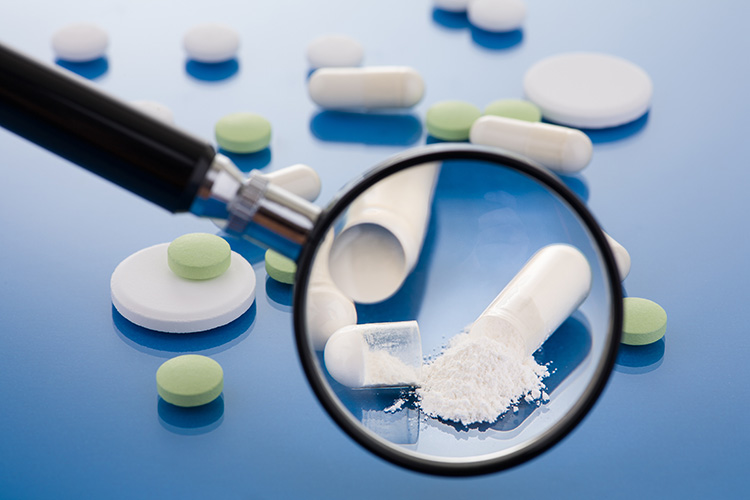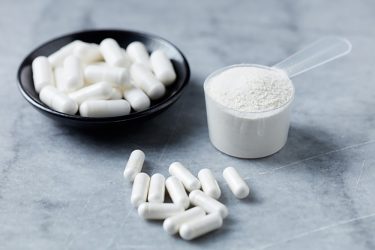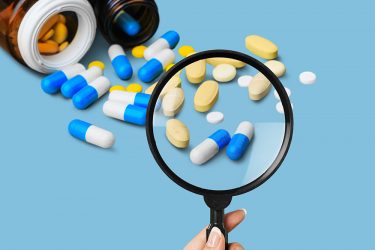Nitrosamines: the latest position
Posted: 7 July 2021 | Dave Elder (David P Elder Consultancy) | No comments yet
Timelines for assessing the potential for contamination of medicinal compounds with nitrosamines have been revised. Here, Dave Elder explains the EMA’s and FDA’s positions and the likely scenarios to be encountered.


EMA’s position
The European Medicines Agency (EMA) initially proposed a risk-based approach for assessing the potential for contamination of medicinal compounds with nitrosamines, with an original deadline of 31 March 2021 for medicines containing chemically synthesised active pharmaceutical ingredients (APIs) and 01 July 2021 for biological APIs.1 If a risk was identified, the applicant was mandated to initiate confirmatory testing and feedback the outcomes as soon as possible. If testing confirmed the presence of nitrosamine contamination, the applicant was required to implement risk mitigation activities and submit variations to the Marketing Authorisation Application (MAA). The revised timelines are 26 September 2022 and 01 July 2023, for medicines containing chemically synthesised APIs or biological APIs, respectively.2


Additionally, EMA had initially proposed a technology-based limit of 30ppb for all nitrosamines in all medicinal products within the EU, irrespective of toxicity.1 This approach was widely criticised for decoupling the technology‑based limit from the acceptable intake (AI) limits, which are safety-based limits based on the median toxic dose (TD50)3 – especially as the AIs are viewed as virtually safe doses (VSD).
However, in its most recent directive issued in February 2021,2 the Committee for Medicinal Products for Human Use (CHMP) concluded that a calculated limit based on 10 percent of the AI is now appropriate – though it is not clear why 10 percent was chosen. In cases where more than one nitrosamine has been confirmed, the total daily limit should not exceed the limit of the most toxic nitrosamine present and the overall risk should not exceed one in 100,000. In addition, in cases where a new nitrosamine without a pre-defined AI is identified, it is recommended to calculate a TD50 based on the existing safety data. In the event of insufficient data to generate a specific AI, a generic class-specific limit based on threshold of toxicological concern (TTC) considerations of 18ng/day can be applied. Alternatively, an appropriately justified structure activity relationship (SAR)-based limit can be derived.
In exceptional cases, higher temporary limits may be justified based on the less-than-lifetime (LTL) approaches enshrined within ICH M7(R1),4 until further measures can be introduced to reduce nitrosamine levels to below the pre‑defined compound-specific AI or the generic limit of 18ng/day.2 Based on the risk assessment and risk evaluation exercises undertaken (as appropriate), there are four different outcomes that can be envisaged, which are summarised in Table 1.
Table 1: Scenarios likely to be encountered based on risk evaluation and risk assessment exercises.2
A | B | C | D |
Level of known nitrosamine in a medicinal product exceeds the AI limit, OR where there is more than one known nitrosamine detected and the total sum of the nitrosamines exceeds the AI limit of the most potent nitrosamine, OR the sum of all detected nitrosamines exceeds the one in a 100,000 lifetime risk. | Level of known nitrosamine in a medicinal product does not exceed the AI limit; but the level is more than 10 percent of the AI limit, OR where there is more than one known nitrosamine detected and the total sum of the N-nitrosamines does not exceed the AI limit of the most potent N-nitrosamine, OR the sum of all detected nitrosamines is below the one in a 100,000 lifetime risk. If nitrosamine is greater than 10 percent but less than 30 percent AI then skip lot testing possible. | No nitrosamine has been detected in a medicinal product, OR the nitrosamine level of the known nitrosamine is below or equal to 10 percent of the AI. The same scenario applies in case more than one known nitrosamine has been detected and the total nitrosamine content is below or equal to 10 percent of the AI limit for the most potent nitrosamine or the sum of all detected nitrosamines. | One or more new nitrosamines have been detected in a medicinal product for which there is no existing published AI. Determine appropriate AI or use default AI of 18ng/day then apply scenarios A, B or C. |
FDA’s position


The US Food and Drug Administration (FDA) took the unusual step of updating its existing guidance without public consultation. FDA highlighted the steps that manufacturers should take to detect and prevent nitrosamine contamination in marketed pharmaceutical products.5 FDA has mandated a three-stage risk assessment of all marketed products and those products with pending applications. This risk assessment applies only to all chemically synthesised APIs and drug products. Manufacturers are requested to prioritise these risk assessments based on maximum daily dose (MDD), duration of treatment, therapeutic indication and number of patients treated. The analytical methods must be appropriately validated and have adequate specificity and sensitivity to meet the low AI-based limits. Generally, manufacturers should use methods with detection limits at or below 30ppb. In addition, if more than one nitrosamine is present, the detection limit should be less than 30ppb, to “accurately quantify a total nitrosamine limit of 26.5ng/day”; if the MDD is 1,200mg or greater, then the detection limit should be less than 20ppb. In accordance with 21 CFR 211.84, “drug product manufacturers must test representative samples of all incoming components, including lots of at-risk API, prior to use. Drug product manufacturers should continue testing API lots until they have verified that the API supplier can consistently manufacture API without unacceptable levels of nitrosamines”. This effectively doubles the testing burden on industry, as both API and drug product manufacturers will test the same lot of API for residual nitrosamines.
FDA also defined a control strategy for nitrosamine contamination. Where levels are detected above the quantitation limit, control strategies should be in place to ensure nitrosamine levels remain at or below the AI limit; this will include testing of each batch at release for both API and drug product. The agency may “exercise regulatory discretion when warranted to prevent or mitigate a shortage of a drug”.
FDA recently conducted a virtual nitrosamine workshop (29-30 March 2021).6 It indicated that we have collectively learned a lot over the last two and a half years and while FDA (and other regulatory agencies) “have made major strides to address gaps to inform regulatory recommendations, they still require collaboration with experts in academia and industry to address the current challenges and to identify harmonised risk assessment strategies”.
About the author
David Elder has nearly 40 years of service within the pharmaceutical industry at Sterling, Syntext and GlaxoSmithKline. He is now an independent GMC consultant. Dave is also a visiting professor at King’s College, London and a member of the British Pharmacopoeia. He is a member of the Joint Pharmaceutical Analysis Group (JPAG) and the Analytical Division Council of the Royal Society of Chemistry.
References
- EMA, 2020. Procedure under Article 5(3) of Regulation EC (No) 726/2004 Nitrosamine impurities in human medicinal products. EMEA/H/A-5(3)/1490. https://www.ema.europa.eu/en/... Accessed 17 May 2021.
- EMA, 2021. European Medicines Regulatory Network approach for the implementation of the CHMP Opinion pursuant to Article 5(3) of Regulation (EC) No 726/2004 for nitrosamine impurities in human medicines. https://www.ema.europa.eu/en/documents/referral... Accessed 24 May 2021.
- Elder DP, Johnson GE, Snodin DJ. Tolerability of risk: A commentary on the nitrosamine contamination issue. J Pharm Sci, 2021, 110(6), 2311-2328.
- ICH M7(R1). ICH M7 Assessment and control of DNA reactive (mutagenic) impurities in pharmaceuticals to limit potential carcinogenic risk.
- FDA, 2021. Control of Nitrosamine Impurities in Human Drugs − Guidance for Industry R1, FDA CDER CGMP. https://www.fda.gov/media/141720/download. Accessed 24 May 2021. Step 5, Effective date February 2018.
- FDA, 2021. Nitrosamines as Impurities in Drugs; Health Risk Assessment and Mitigation Public Workshop. March 29 – 30, 2021. https://www.fda.gov/drugs/news-events-… Accessed 24 May 2021.









